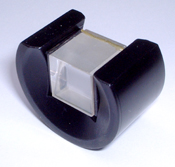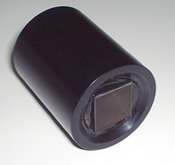Rochon & Wollaston Polarizers
Cemented calcite crystal beamsplitter polarizers
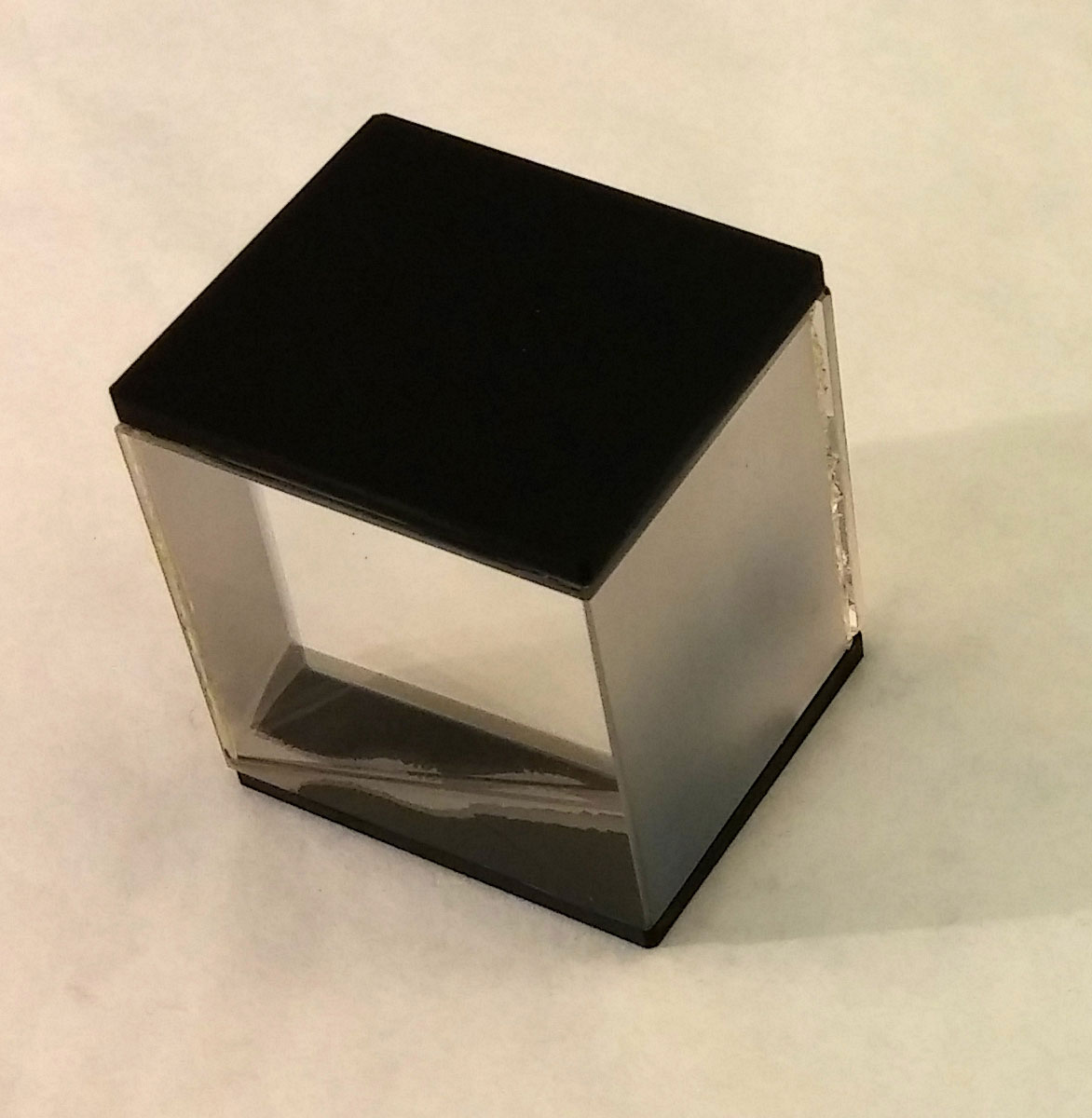
The Wollaston and Rochon polarizers are both beam splitting type devices which rely upon the large birefringence of calcite to cause a difference in the refraction angle at the interface between two differently orientated prisms. In both the Wollaston and the Rochon polarizer the prisms are usually cemented at the interface so the optical power handling is low as a result.
ROCHON TYPE
In the Rochon polarizer one polarization state is transmitted undeviated through the prism while the orthogonal component is deviated approximately 10°. In the first prism the light propagates as the ordinary polarized ray regardless of the direction of the electric field vector. The optical axis in the second prism is rotated such that both polarization states can exist and hence the ordinary ray remains undeviated at the interface, but the orthogonal polarization state sees the lower extra-ordinary ray index and hence is refracted at the interface. The straight through component is clearly achromatic as no refraction occurs while the deviated beam varies from 11° at 0.32µm to 8.5° at 2.5µm.
WOLLASTON TYPE
Wollaston prism polarizing beam splitters consist of two equal angle calcite prisms optically coupled with optic axis orthogonally crossed to the direction of propogation. The ordinary ray in the first prims therefore becomes the extraordinary ray in the second (and vice-versa). The beam separation of about 20° is then approximately balanced about the input beam axis and drops to about 18° at 2.5µm. The transmission range for cemented prisms is around 0.4 to 2.5µm.
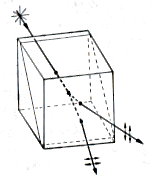
|
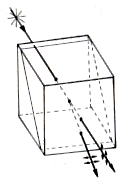
|
| Wollaston Type BSW | Rochon Type BSR |
Specifications
| Type |
Aperture (mm) |
Deviation (deg) |
Mount Dia (mm) |
Mount Length (mm) |
| BSW | 10 | 20° | 25 | 11 |
| BSW | 12 | 20° | 25 | 13 |
| BSW | 15 | 20° | 30 | 16 |
| BSW | 20 | 20° | 40 | 20 |
| BSR | 10 | 10° | 25 | 11 |
| BSR | 12 | 10° | 25 | 13 |
| BSR | 15 | 10° | 30 | 16 |
| BSR | 20 | 10° | 40 | 20 |
Both varieties can also be made from optically contacted quartz. The beam deviation is then reduced to only 1° and 0.5° respectively because of the much lower birefringence of quartz compared to calcite. However, the spectral range is increased to 0.2 - 2.0µm.
It should also be noted that because the input prism is orientated along the c-axis of the quartz, the optical activity will cause the polarization to be rotated by a different amount across the aperture of the beam, thus varying the ratio of S & P-polarized components across the output beam. If the input is truly un-polarized this will be of no consequence because of spatial averageing, but quartz Rocohons should not be used to analyse polarized light. This of course does not apply to the calcite version because it is not optically active along the c-axis.